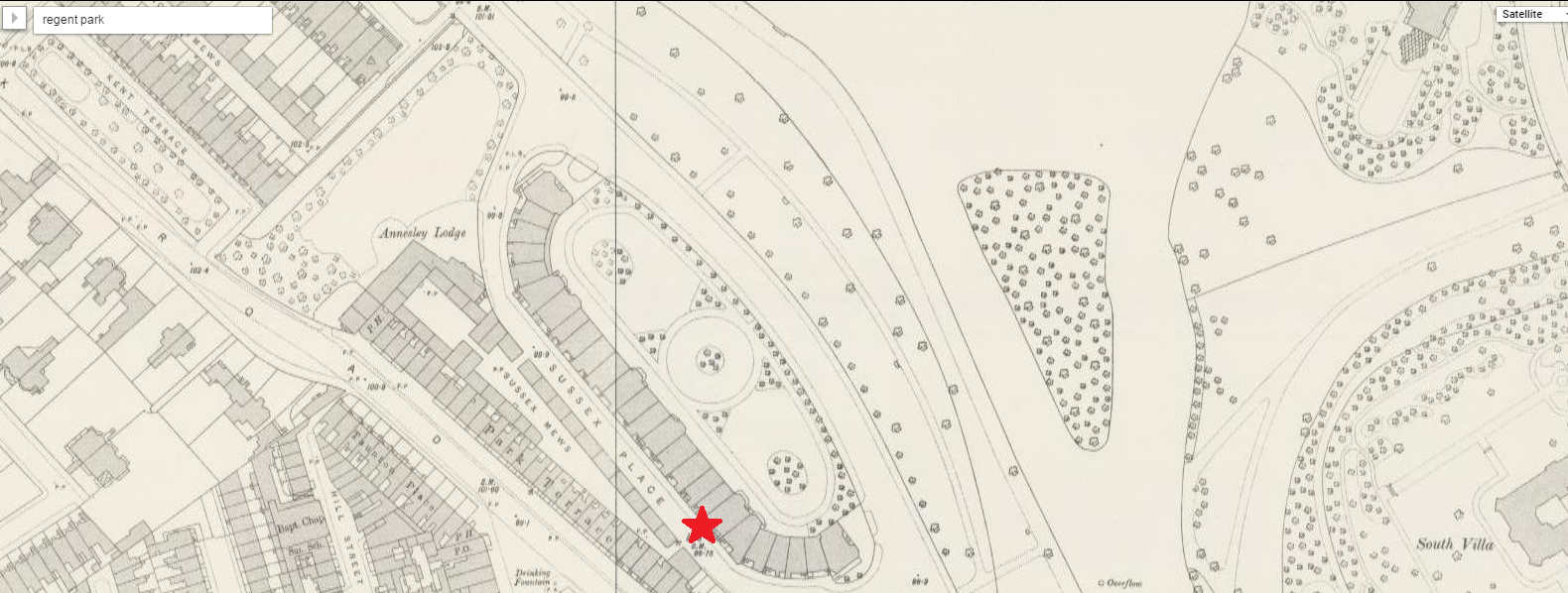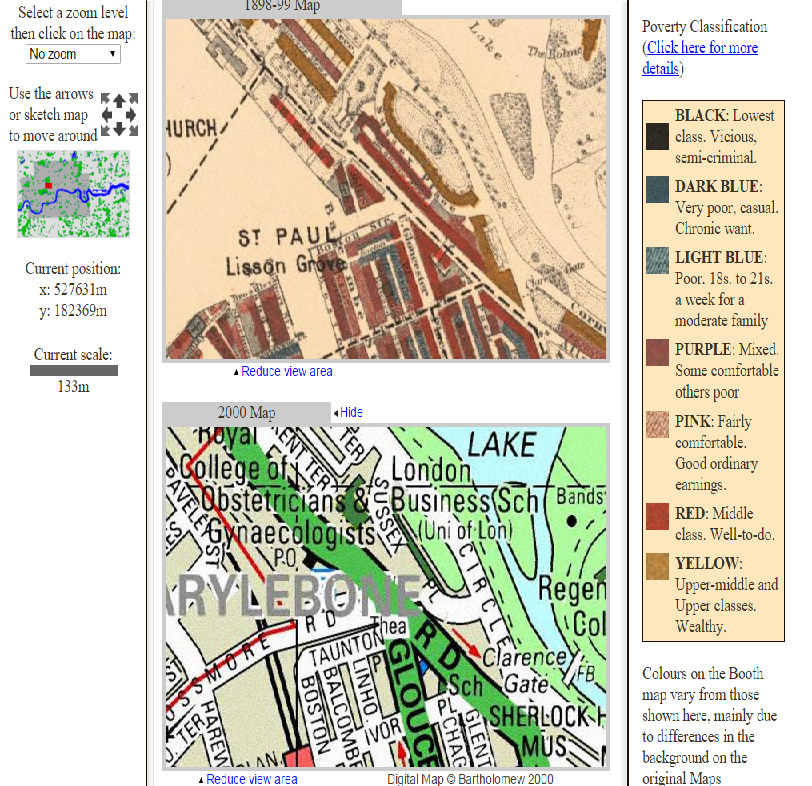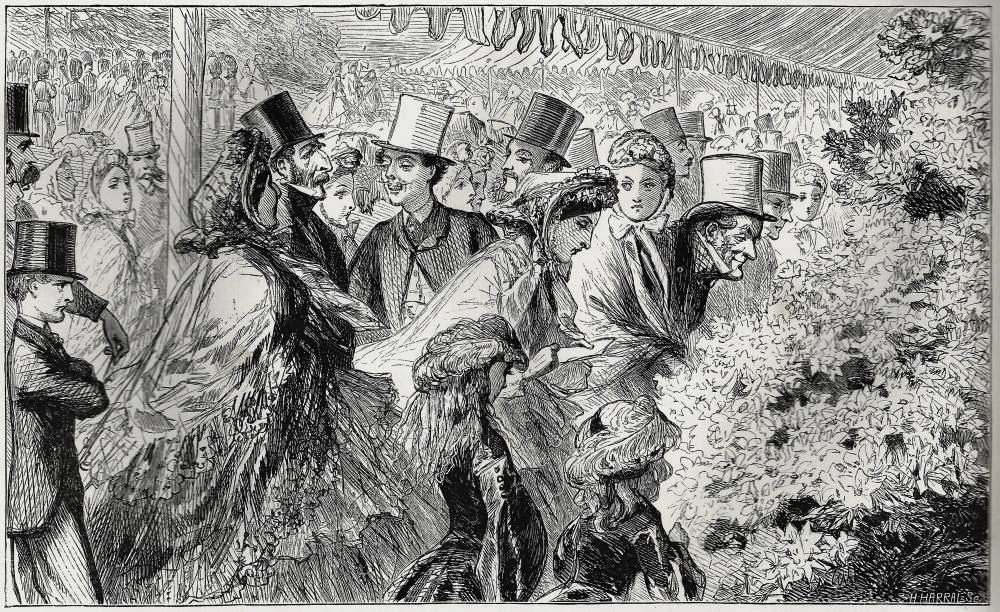
According to Charles Booth Online Archive, Sussex Place was considered both an upper-middle and upper-class setting. Regrettably, there are few historical records denoting its’ illustrious historical past. Sussex Place is advantageously situated on the outskirts of Regent’s Park. Regent’s Park is renowned as the site of the Royal Botanic Society’s Gardens, the Zoological Garden, and the Toxophilite Society Grounds (Charles Booth Online Archive). In 1760, Cambridge established one of the first Botanic Gardens in the world; however, it is not the site of Regent’s Park. Furthermore, Regent’s Park held possession of the Toxophilite Society Grounds, a prestigious archery club made famous by the Prince of Wales and King George IV of England in 1780 (British History Online, “Sport, ancient and modern: Pastimes” ).

With this information in mind, Regent’s Park and Sussex Place were bothlikely occupied by the elite highbrow of the day. In contrast, the sisters of The Romance of A Shop by author Amy Levy, are young and gifted middle-class, socially independent women and proven to be astute in managing a photography studio. Incongruous to their proven record, women as owners and managers of businesses were not credited as being highly reputable. This outmoded mindset causes Fanny to state in chapter one, “[n]eed it come to that- to open a shop?” (Levy, 54).


Gertrude travels to the Watergate home, independent of a chaperone and “has no difficulty in finding Sussex Place.” She has been summoned to take the disease photo of Lord Watergate’s late wife in the practice known as “postmortem photography” (Levy, 85-87). Her public presence in London and her increased knowledge of urban life and surroundings enables her to find her way (86). She astutely goes on to describe the Watergate home as being “located mid-way between the terrace” and as having a “white curve of houses with columns, the cupolas, and the railed-in space of garden that fronted the Park” which vastly contrast her mourning gown and boots (86).
The significance of this inimitable location in the novel is socially relevant. Author Amy Levy superficially makes an argument that society views Flâneur, educated and independent women, as being socially inappropriate. Paradoxically, Levy underscores the significance of society placing emphasis on marriage and forewarns women that if they are “consumed” by men, they will surely die. Lady Watergate, as reflected upon by the sisters, died of “consumption” and her demise is compared to the departure of Phyllis. Similarly, Lady Watergate was a new woman like Phyllis. Lady Watergate is not viewed as being fully appreciative of her husband’s attention and his accomplishments. The depraved Phyllis mingles with married men and attempts a romantic tryst. Society seemingly is punishing both women for their “consumption” which can be defined as being consumed with being socially independent, obsessed with men and personal beauty. Phyllis dies an artistic death; however she is not immortalized. Lady Watergate experiences a slow and painful demise. Nevertheless, she is memorialized with a beautiful picture. (Levy, 84). For this reason, Phyllis narcissistically declares “what perfect features she has. Mrs. Maryon told us she was wicked, didn’t she? But I don’t know that it matters about being good when you care as beautiful as all that” (Levy, 88).
Works citied
“Charles Booth Online Archive.” Charles Booth Online Archive. Web. 16 Dec. 2015.
Levy, Amy, and Susan David Bernstein. The Romance of a Shop. Peterborough, Ont.: Broadview, 2006. Print.
‘Sport, ancient and modern: Pastimes.’ A History of the County of Middlesex: Volume 2, General; Ashford, East Bedfont With Hatton, Feltham, Hampton With Hampton Wick, Hanworth, Laleham, Littleton. Ed. William Page. London: Victoria County History, 1911. 283-292. British History Online. Web. 14 December 2015. http://www.british-history.ac.uk/vch/middx/vol2/pp283-292.
“The Artist at the Flower-Shows: Bewitched! (an Incident at the Royal Botanic Society’s Garden, Regent’s Park)” by George Housman Thomas(1824–68).” “The Artist at the Flower-Shows: Bewitched! (an Incident at the Royal Botanic Society’s Garden, Regent’s Park)” by George Housman Thomas(1824–68). Web. 16 Dec. 2015.
‘The University of Cambridge: The Botanic Garden.’ A History of the County of Cambridge and the Isle of Ely: Volume 3, the City and University of Cambridge. Ed. J P C Roach. London: Victoria County History, 1959. 324-325. British History Online. Web. 15 December 2015.
